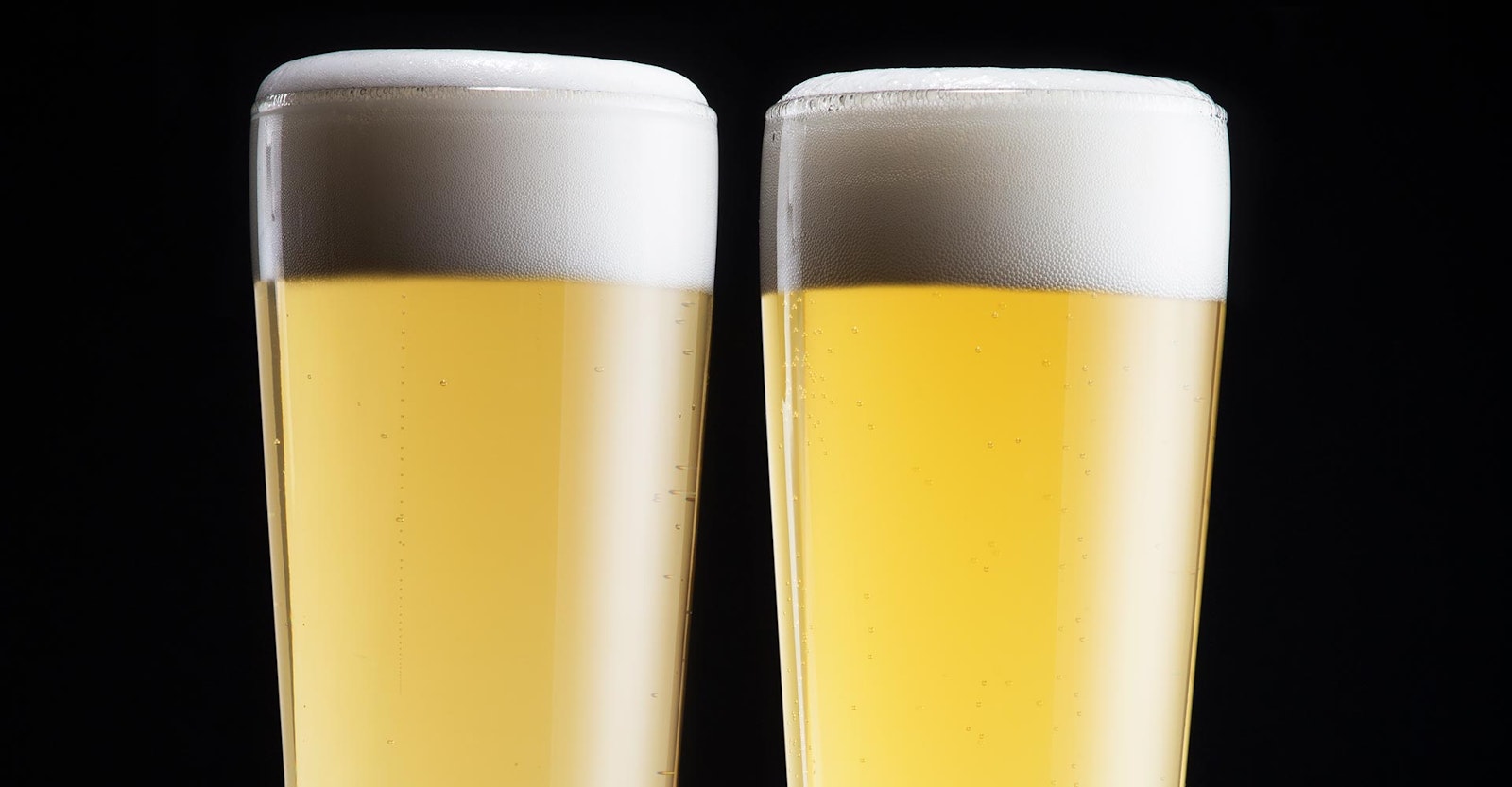In the first article of this series we looked at how DMS is generated, how it is volatilized, and played a bit with a new concept for eliminating it in a very light-colored beer. After a series of test batches to identify the base malt with the biggest DMS issue, a wort was made and fermented using only that malt. It was then allowed increasing lengths of time to rest before boil, in the hopes of generating the maximum amount of DMS, which could then be boiled off in a short period of time, thus decreasing the wort darkening that happens in a traditional 75–90 minute direct-fire boil. These samples were then fermented and sent to the lab at New Belgium Brewing in Fort Collins, Colorado for analysis. As we saw in Part 1 of this article, the “DMS stand” did indeed decrease the amount of DMS in the finished beer.
The Test
Armed with this information, the final test would be to simply create a side-by-side beer allowing half of the wort to stand above 165°F for 100 minutes before boiling for only 20 minutes, while the other half undergoes the normal 75-minute boil. The second wort was diluted to matching gravity at the twenty minute mark, just to keep hop utilization, etc., as similar in the two as I could. Both worts were given only one hop pitch, at 20 minutes. They were both then chilled as rapidly as possible, which in itself is arguably the most important part of ensuring low levels of DMS. After a fairly quick ferment of seven days at 50°F, I allowed the beers to free-rise into the mid-60’s to finish out. Although this is not my normal lager protocol, I was eager to get to the bottom of this side-by-side. After another five days I threw in some gelatin and dropped the temps into the low 40s for a few days before kegging and carbonating. Now we have beer!
The Taste
Keeping in mind that for a 6.2% blonde lager, tasting happened very early, and there was a noticeable acetaldehyde “green beer” character to both of them. Also, neither of them were spectacularly bright. That said, it was interesting to see the differences between the two. Notably, the short-boil version (opposite, right) dropped bright(er) faster, and seemed to take to the fining more quickly, yet seemed to have more of an issue with chill haze. Also, the long-boil sample (above, left) had a stronger acetaldehyde roughness such that a few of the tasters found it off-putting. How they will stack up after a proper three or five week lagering remains to be seen, but even looking past the acetaldehyde, everyone that tasted the two either felt they both had only very low levels of DMS, or that the long boil was the worse offender. One obvious differential is the amount of hot break the long boil got before pitching hops. Could that have accounted for the increased acetaldehyde, or for the chill haze in the shorter boil? And why did the short boil drop bright in after fermentation faster? To my mind, a faster flocculation should increase acetaldehyde at least in some cases.
As is hopefully evident in the picture, both beers were quite light in color despite being nearly 6 percent ABV and having zero color-cheating adjuncts. Considering that the original intent of the experiment was “how to avoid wort darkening from a long boil,” I’ll admit the color difference between the two is nominal, but the lightness of the beer shows how much just a few parts of a degree Lovibond in your base malt can make a difference in the finished beer. Many brewers shy away from the extremely low-colored malts precisely because of the difficulties with DMS, but after seeing these results, I am confident that a combination of DMS stand pre-boil, standard 75-minute boil and fast-as-can chill will create a wonderfully light wort for a Pilsner, helles, Kölsch, or any other style that begs to be brewed as bright and colorless as possible. And the Extra-pale Pilsner has a delightfully doughy aroma with just a hint of bread crust. Definitely worth playing with.
Your Turn
If you’d like to give it a shot, here’s a recipe for a very light but strong Festbier to brew at home. This beer is much more about process than ingredients, so don’t let the simplicity of it fool you. Most important is a rapid chill, a strong pitch of yeast and maintaining fermentation temperatures. Of course we can’t overlook packaging as the final step of excellence. For my very soft water I added 2 teaspoons calcium chloride and ¼ teaspoon calcium sulfate, but I will leave the individual salt adjustments to you. Though in testing the DMS stand happened after lauter, and was held for a full 100 minutes, what follows is how I plan my next iteration, using the new-found data.

